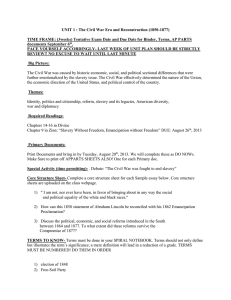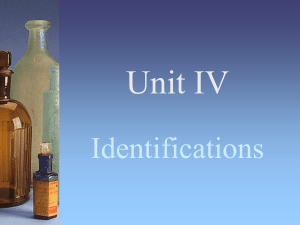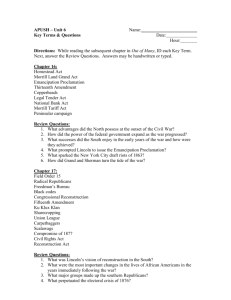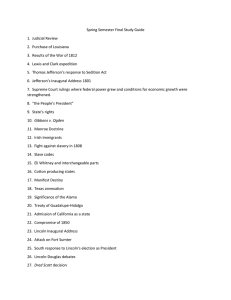Unit 6 Review Guide
advertisement
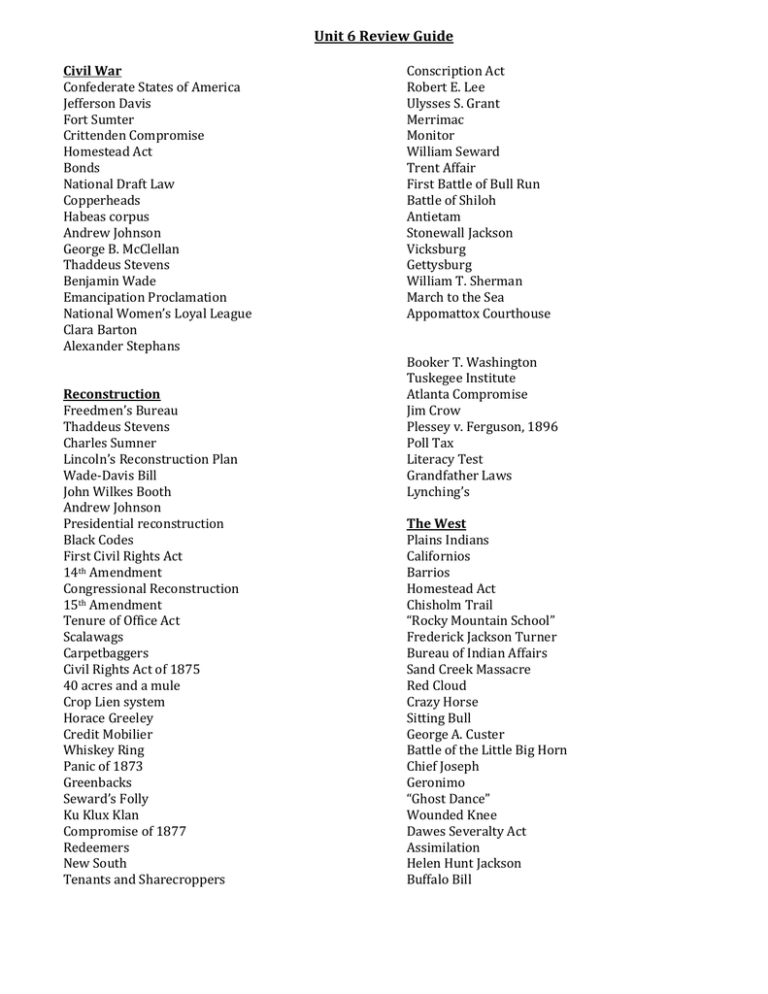
Unit 6 Review Guide Civil War Confederate States of America Jefferson Davis Fort Sumter Crittenden Compromise Homestead Act Bonds National Draft Law Copperheads Habeas corpus Andrew Johnson George B. McClellan Thaddeus Stevens Benjamin Wade Emancipation Proclamation National Women’s Loyal League Clara Barton Alexander Stephans Reconstruction Freedmen’s Bureau Thaddeus Stevens Charles Sumner Lincoln’s Reconstruction Plan Wade-Davis Bill John Wilkes Booth Andrew Johnson Presidential reconstruction Black Codes First Civil Rights Act 14th Amendment Congressional Reconstruction 15th Amendment Tenure of Office Act Scalawags Carpetbaggers Civil Rights Act of 1875 40 acres and a mule Crop Lien system Horace Greeley Credit Mobilier Whiskey Ring Panic of 1873 Greenbacks Seward’s Folly Ku Klux Klan Compromise of 1877 Redeemers New South Tenants and Sharecroppers Conscription Act Robert E. Lee Ulysses S. Grant Merrimac Monitor William Seward Trent Affair First Battle of Bull Run Battle of Shiloh Antietam Stonewall Jackson Vicksburg Gettysburg William T. Sherman March to the Sea Appomattox Courthouse Booker T. Washington Tuskegee Institute Atlanta Compromise Jim Crow Plessey v. Ferguson, 1896 Poll Tax Literacy Test Grandfather Laws Lynching’s The West Plains Indians Californios Barrios Homestead Act Chisholm Trail “Rocky Mountain School” Frederick Jackson Turner Bureau of Indian Affairs Sand Creek Massacre Red Cloud Crazy Horse Sitting Bull George A. Custer Battle of the Little Big Horn Chief Joseph Geronimo “Ghost Dance” Wounded Knee Dawes Severalty Act Assimilation Helen Hunt Jackson Buffalo Bill Unit 6 Review Guide Essay Questions John Brown’s raid on the federal armory at Harper’s Ferry, Virginia, in October 1859, involved only a handful of abolitionists, freed no slaves, and was over in two days. Although many northerners condemned the raid, by 1863 John Brown had become a hero and a martyr in the north. To what extent, and in what ways, did the views about John Brown expressed in the documents illustrate changing north-south relations between 1859 and 1863? “By the 1850s the Constitution, originally framed as an instrument of national unity, had become a source of sectional discord and tension and ultimately contributed to the failure of the union it had created.” Using the documents and your knowledge of the period, assess the validity of this statement. “I am not, nor ever have been, in favor of bringing about in any way the social and political equality of the white and black races.” How can this 1858 statement of Abraham Lincoln be reconciled with his 1862 Emancipation Proclamation? To What extent was President-elect Lincoln responsible for the defeat of the Crittenden Proposal on the territorial expansion of slavery? How do you account for the failure of Reconstruction (1865-1877) to bring social and economic equality of opportunity to the former slaves? In what way, and to what extent did constitutional and social developments between 1860 and 1877 amount to a revolution?
